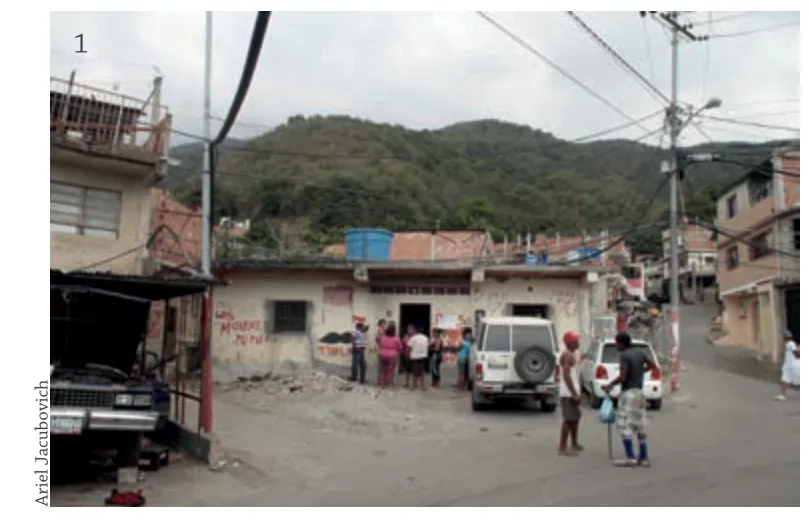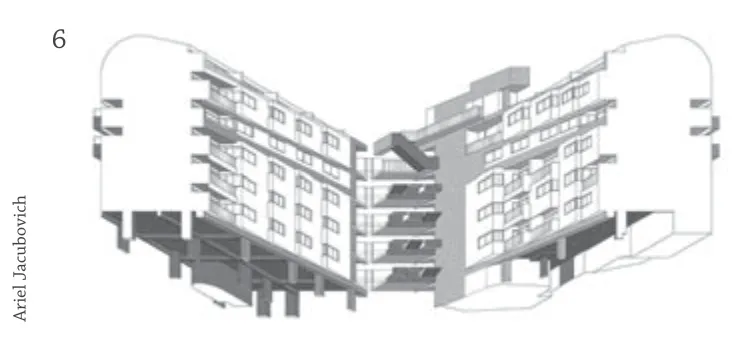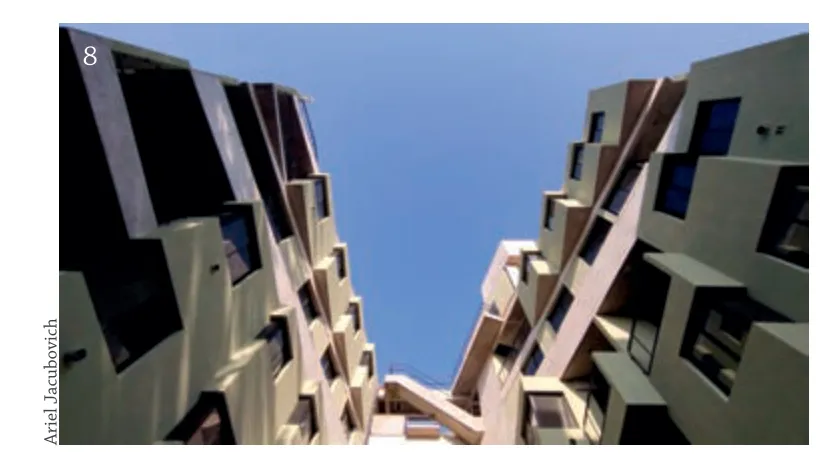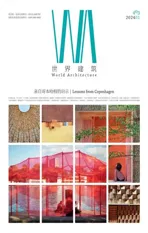装配式建筑
——复杂城市生态系统中的共识对象和联盟型城市主义
2024-01-27阿里尔哈科维奇
阿里尔·哈科维奇
15 年来,阿里尔·哈科维奇建筑事务所一直致力于装配式建筑,这是一种与组织合作开展建筑项目的研究实践。装配式建筑描述了一种全新的建筑制作方式,通过体系化的装配改善居住环境。“装配”这一概念是一种手段,它将建筑设计—生产实验室与支撑和驱动这些设计的情景联系起来。这一过程所产生的不仅仅是设计提案,即构建或可视化潜在的转变,更是对替代生活方式和空间的预设。开发这种建筑的主要工具是我们所称的“项目装配”。作为一个混合论坛,该装置将这一项目材料转换系统中的不同参与者联系在一起。项目装配有不同的类型,其动态和目标会随着时间的推移而变化,所涉及的参与者也会改变。设计装配将生产出来的物件引入另一个领域,有时是更具娱乐性的地方,有时是材料实验的地方。
通过装配,建筑可以作为一系列“共识对象”运作,它在复杂场景中表达利益和分歧。一旦达成一定程度的共识,建筑的其他任务,也就是关于设计的部分,将在建筑的传统环境中执行。在解决技术问题和建筑表现问题时,不能忽视社会政治群体的表现——也就是所有的人类和非人类成员参与者。所产生的建筑作品必须用于维系建筑所处的网络,同时激活该网络中人类和非人类成员的参与。
这些建筑也是城市化的载体,因为当它们置身于这些环境中时,能够引导争议走向一个转变的过程:一个网络化的城市或“联盟型城市主义”。
在实施这些项目的过程中出现了以下问题:在复杂的生态系统中,即在公共政策和再城市化进程无法触及的地方,如何实现转型?建筑如何才能既是公共的又是自我管理的?如何让人们参与到最具体的建筑项目中来?如何将国家或政府计划纳入一个联盟网络,将其视为另一位参与者,并且没有比其他任何人更多的权重?

1 委内瑞拉皮诺山谷和平空间广场建造前 The site before construction of Espacio de Paz,Valle del Pino,Venezuela

6 阿根廷布宜诺斯艾利斯省圣马丁比亚里茨集体住宅项目设计,2016-2019年 Drawing of Biarritz housing collective,San Martín,Buenos Aires province,Argentina,2016-2019

7 在设计过程中与比亚里茨集体住房未来居民的合作 Collaboration with the future residents of the Biarritz housing collective in the design process

8 比亚里茨集体住宅楼 The Biarritz housing collective building
For over fifteen years,Ariel Jacubovich Oficina de Arquitectura,has been engaged in assembly architecture,a research practice to carry out architecture projects in conjunction with organisations.
Assembly architecture describes a new way of producing architecture that transforms inhabitable environments through networked assemblages.The figure of the "assembly" is a means to open up architecture's design-production laboratory to the scenarios that sustain and drive those designs.
What emerges from this process is not solely a design proposal in the sense of the construction or visualisation of a possible transformation,but also a prefiguration of alternative forms of life and spaces.
Our main tool to develop this architecture is what we call "Project Assembly".As a hybrid forum,this device relates heterogenous actors in the system of material transformation that is the project.There are different types of project assemblies,and their dynamics and objectives change over time,as do the actors involved.Design assemblies take the objects produced to another field,sometimes to a more playful place or a place of material experimentation.
Thanks to assemblies,architecture can operate as a series of "objects of consensus" that articulates interests and divergencies in a complex context.Once a degree of consensus has been reached,other tasks inherent to the design are performed in the conventional settings of architecture.Work on technical issues and questions of architectonic representation must not lose sight of the socio-political representation of the community -that is,the entire set of actors -that participates.What is produced must serve to hold together the network in which the architecture is immersed as well as to activate participation in that network on the part of its human and non-human members.
At stake are architectures that act also as vectors of urbanisation insofar as they are capable,when inserted in those contexts,of channelling disputes toward a process of transformation: a networked urbanisation or an "urbanism of associations."
The following questions arose over the course of these projects: How can transformation take place in complex ecologies,that is,in places beyond the reach of public policies and processes of reurbanisation? How can an architecture be at once public and self-managed? How can participation be generated in even the most architecture-specific instances of a project? How can the state or governmental programs be brought into a network of associations as just another player,with no more weight than any of the others?
